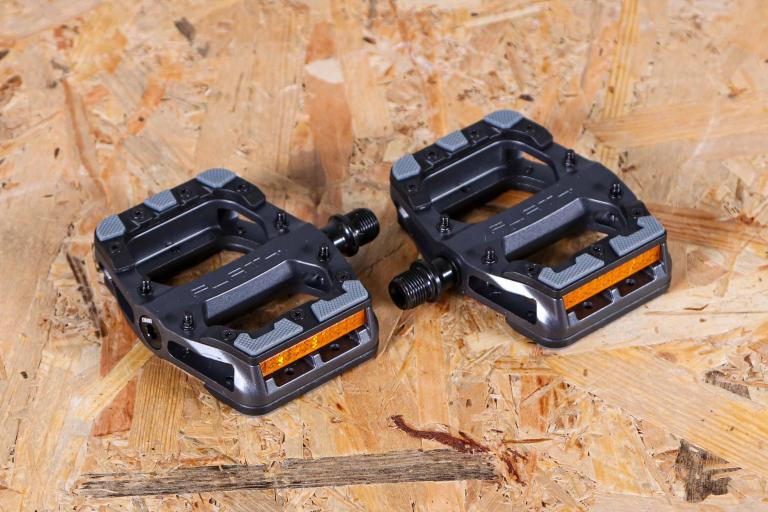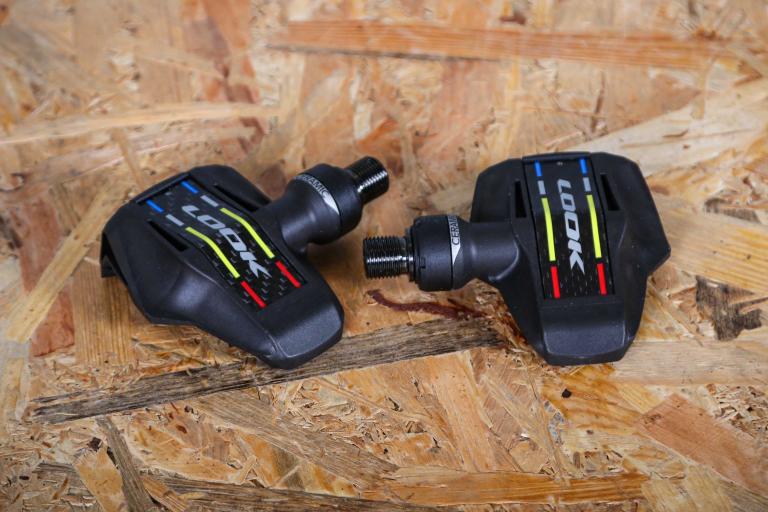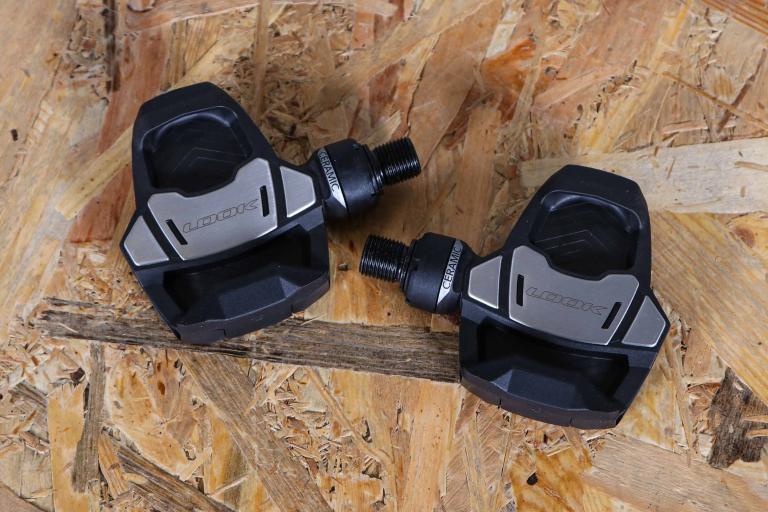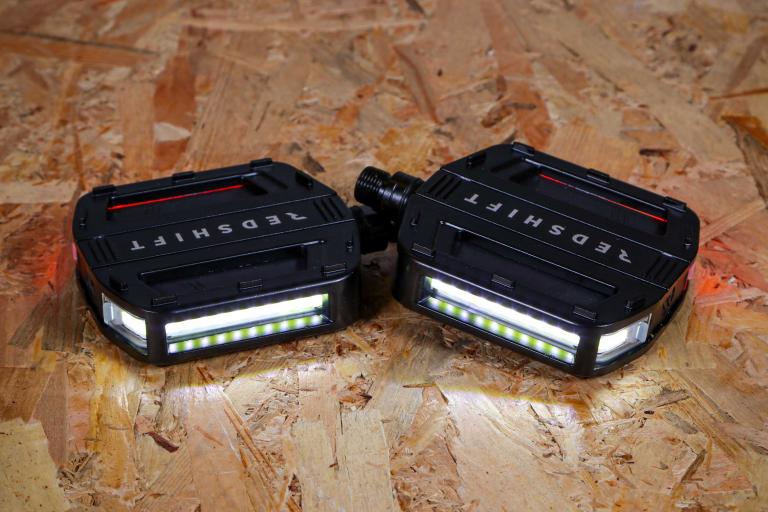- News
- Reviews
- Bikes
- Accessories
- Accessories - misc
- Computer mounts
- Bags
- Bar ends
- Bike bags & cases
- Bottle cages
- Bottles
- Cameras
- Car racks
- Child seats
- Computers
- Glasses
- GPS units
- Helmets
- Lights - front
- Lights - rear
- Lights - sets
- Locks
- Mirrors
- Mudguards
- Racks
- Pumps & CO2 inflators
- Puncture kits
- Reflectives
- Smart watches
- Stands and racks
- Trailers
- Clothing
- Components
- Bar tape & grips
- Bottom brackets
- Brake & gear cables
- Brake & STI levers
- Brake pads & spares
- Brakes
- Cassettes & freewheels
- Chains
- Chainsets & chainrings
- Derailleurs - front
- Derailleurs - rear
- Forks
- Gear levers & shifters
- Groupsets
- Handlebars & extensions
- Headsets
- Hubs
- Inner tubes
- Pedals
- Quick releases & skewers
- Saddles
- Seatposts
- Stems
- Wheels
- Tyres
- Health, fitness and nutrition
- Tools and workshop
- Miscellaneous
- Cross country mountain bikes
- Tubeless valves
- Buyers Guides
- Features
- Forum
- Recommends
- Podcast
review
£149.99
VERDICT:
Excellent pedals, the clip in is truly revolutionary the only thing that lets them down is alarmingly quick cleat wear
Weight:
235g
Contact:
www.chickencycles.co.uk
At road.cc every product is thoroughly tested for as long as it takes to get a proper insight into how well it works. Our reviewers are experienced cyclists that we trust to be objective. While we strive to ensure that opinions expressed are backed up by facts, reviews are by their nature an informed opinion, not a definitive verdict. We don't intentionally try to break anything (except locks) but we do try to look for weak points in any design. The overall score is not just an average of the other scores: it reflects both a product's function and value – with value determined by how a product compares with items of similar spec, quality, and price.
What the road.cc scores meanGood scores are more common than bad, because fortunately good products are more common than bad.
- Exceptional
- Excellent
- Very Good
- Good
- Quite good
- Average
- Not so good
- Poor
- Bad
- Appalling
The I-Clic is Time's revolutionary metal spring free clipless road pedal, doing away with heavy archaic mechanics the whole cleat retention system is replaced by a simple single leaf of carbon that you would hope made the pedal lighter, smaller and pretty dang cool. The reality is a bit different, these I-Clic Carbons are actually a similar size but ever so slightly heavier than the old style Time RXS Carbons of a similar social strata they were swapped for. The I-Clic are cooler though, because they're more carbony.
The Carbon I-Clics come with a carbon body, hollow steel axle, the Time patent carbon blade 'spring', an aluminium arch axle and carbon blade support. One up from this model the top of the range I-Clic Ti Carbon comes with a Titanium axle giving you 56g less weight for 100 more pounds, with less expensive models having lower rent steel axles and a flexible composite spring-blade instead of a carbon one.
The cleats are similar in shape to the old RXS models but a bit larger for more stability and gone is the large lump of brass that gave Time cleats their reassuring clunk-click and their impressive longevity to be replaced by an integrated composite lunk which makes the cleats a pleasant 20g lighter a pair. The pontoons out the back remain to make walking across an Italianate marble floor carrying a tray of espressos and pastries to your training mates a less daunting challenge.
All of the familiar and loved Time bio-dynamic numbers are still there; the foot to the centre of the pedal distance of 7.7mm is the closest of any pedal system according to Time, making for a more efficient pedal stroke, so they say, although in all our years we've never heard anyone comment about their foot's distance from the pedal axle. The cleats are offset so that swapping them between left and right shoes alters the Q-Factor (the distance between the foot and the crank) by just over 2.5mm per shoe. The lateral float of 2.5mm and the +/- 5 of angular float that has made them so popular with those of a feeble knee is retained, and they keep the same 15 release angle while the S.E.T. (Sensor Elasticity Tuner) has three settings to alter the feel of the aforementioned float.
But the big news is the ease of clipping-in. Time say in their blurb that the I-Clic is the first pedal with pre-opening automatic engagement, "auto step-in" engagement that is instantaneous, intuitive, without friction and effortless. In layman's terms that means the cleat doesn't have to work against the spring to clip-in, the key being a 'trigger' mechanism that holds the rear latch mostly open after you've unclipped, making clipping back in a doddle with what Time say is the lowest entry effort of any mechanical pedal system currently on the market. And you know what, they're right. The I-Clic's are ridiculously easy to clip into, it feels like you just have to wave your foot in the direction of the pedal and the cleat slips into place, yet still with a decent click so you know you're in. You don't have to concentrate on feeding the cleat in toe first or have to grind the rear of the cleat into the pedal trying to overcome spring tension, essentially you just step on the pedal and you're clipped in. There's no spring adjustment to hold the foot in tighter or looser but it's not needed, once in the pedal the shoe is held securely and hasn't once come out untoward in a selection of demanding climbs and thrashing sprints, and the heel-out release when you want it has a solid exit clunk that doesn't require leg yanking to initiate.
The effortless cleat engagement should be welcome news if you're one of those people that's always having sweary trouble clipping into your pedals at junctions and traffic-lights, and any road clipless virgins who might be nervous, frightened even by the whole getting in and out of single-sided road pedals will definitely have their worries dispelled by the I-Clics.
If you're used to Times the clipped-in sensation is almost identical, although replacing that nugget of brass on the cleat with a lump of composite makes the feel of the float a little less fluid, but it's not really a problem and it only feels more sticky if you really concentrate on it, adjusting the SENSOR to the loosest of the three settings noticeably ups the slippery feel of the cleat. Newcomers to Times will appreciate the float in both lateral and angular planes that doesn't hold a foot rigidly in place but lets it do it's own wiggly thing through a pedal revolution, a feature that has made friends with many a dodgy knee.
Unfortunately cleat wear is pretty rapid, obviously deterioration will vary by how much you walk about in your road shoes from bike to tea-shop to front door but it doesn't take too long for the front spear of the cleat to get pretty dog-chewed and tatty, especially on the puty-downy foot. Performance isn't effected by this wear but when the cleat gets rattly in the pedal it's time to get some new ones, mainly because the extra jittery movement is a bit annoying. The pedals have developed a teeny bit of play in the bearings over, er, time, which from experience is something Times do, but the play isn't perceptible at all under foot and the bearings are still running silky smooth after a whole bunch of miles.
Verdict
The I-Clic is an excellent pedal, the click-in is truly revolutionary in that it totally removes any tutting and faffing about trying to get a cleated foot forced into a strong spring that can hamper other pedals, a plus to both seasoned riders keen for quick getaway and anxious newbies alike. Pedal longevity is very good, a trait that unfortunately isn't shared by the cleats that wear somewhat alarmingly. Get those made out of something more sturdy and the I-Clics could be the best pedal ever, period.
road.cc test report
Make and model: Time i-Clic Carbon pedals
Size tested: n/a
Tell us what the product is for, and who it's aimed at. What do the manufacturers say about it? How does that compare to your own feelings about it?
Time say that the I-Clic is "THE FASTEST PEDAL EVER INVENTED!", which is a bit of a shouty proclamation, but their claim to have revolutionised automatic pedal technology with the first pedal with a carbon blade does ring true. They continue by saying that substituting the Carbo Flex blade in place of spring tension on road pedals assists the pre-opening function, improves fatigue resistance and significantly reduces weight. The I-Clic is the first pedal with pre-opening automatic engagement which gives engagement is instantaneous, intuitive, frictionless and effortless engagement.
I'd say that's all right on the money, they are silly easy to get into, shame they don't mention the cleats, which while lighter and have a large surface area are also less durable.
Tell us some more about the technical aspects of the product?
The Time I-Clic Carbons have a hollow steel axle, carbon body, Carboflex flexible carbon blade, aluminium arch axle and carbon blade support. Featuring the I-Clic pre-opening automatic engagement with Sensor regulation of angular sensations and Q-Factor options, the 447 mm2 Oversize Pedal Platform offers a pedal + cleat Bioposition of 13 mm. The cleat allows 5deg of angular float and lateral float of 2.5 mm and a release angle of 15deg.
Weight is 235 grams (5%) per pair. Cleats and hardware add 78g to bring the complete system weight up to 313g
Rate the product for quality of construction:
8/10
The pedals are well made and have survived a hefty mileage battering scar free and bearing happy.
Rate the product for performance:
9/10
An excellent pedal that addresses the sometimes fiddly problem of clipping in, and with Times knee-friendly float too.
Rate the product for durability:
6/10
The actual pedals are holding up valiantly, but they've had to be marked down due to swifter than liked cleat wear.
Rate the product for weight, if applicable:
8/10
The pedals weren't as light as hoped for with a heavy metal spring being replaced by a carbon leaf, but the brass-free composite cleats help with weight loss.
Rate the product for comfort, if applicable:
9/10
Rate the product for value:
8/10
They're in the ballpark for a carbony pedal, but best keep some pocket-money aside for extra cleat purchases later on.
Tell us how the product performed overall when used for its designed purpose
As a clipless pedal that's been created to offer quick and easy cleat engagement it did it's job amazingly.
Tell us what you particularly liked about the product
The incredibly easy clipping in.
Tell us what you particularly disliked about the product
Cleat wear.
Did you enjoy using the product? Yes
Would you consider buying the product? Yes
Would you recommend the product to a friend? Yes, both to experienced cyclists and especially any newcomers that might be put off by stories of difficult to get into road pedals.
About the tester
Age: 42 Height: 180cm Weight: 73kg
I usually ride: It varies as to the season. My best bike is: The one I'm on at the time
I've been riding for: Over 20 years I ride: Most days I would class myself as: Experienced
I regularly do the following types of riding: road racing, cyclo cross, general fitness riding, fixed/singlespeed, mtb, Fun
Jo Burt has spent the majority of his life riding bikes, drawing bikes and writing about bikes. When he's not scribbling pictures for the whole gamut of cycling media he writes words about them for road.cc and when he's not doing either of those he's pedaling. Then in whatever spare minutes there are in between he's agonizing over getting his socks, cycling cap and bar-tape to coordinate just so. And is quietly disappointed that yours don't He rides and races road bikes a bit, cyclo-cross bikes a lot and mountainbikes a fair bit too. Would rather be up a mountain.
Latest Comments
- Eton Rifle 3 hours 41 min ago
The difference is that the Labour Party has actually done something about it by booting him out. If he'd been a Tory, the twat would have been...
- BBB 4 hours 35 min ago
"Buggy hit by car blamed on traffic scheme"...
- Jogle 4 hours 43 min ago
The Giro starts on the 9th May, so the new programme finishing on 5th June would mean that it covers the end of the Giro and then stops
- chrisonabike 4 hours 44 min ago
I feel Google needs one of Henry Beard's books for more up-to-Silver-Age colloquial source material (or even better literal translation)...
- ErnieC 4 hours 52 min ago
I would say a 10 in front of the 6 would be a more appropriate sentence.
- Dr Neal Spowage 5 hours 55 min ago
I'm disabled and a wind up workstand would be a godsend for even the most basic of maintenance tasks. These things are almost non-existent. I'd be...
- Rendel Harris 9 hours 50 min ago
A set of pedals can come in proper handy too sometimes.
- NoOneSpecial 10 hours 17 min ago
Memory lane!...
- wtjs 13 hours 48 min ago
Mercedes A-Class WU66 LLJ below went without MOT for 8 1/2 months from 19.10.23 to 2.7.24. I just happen to be doing some following up and evidence...
- HarrogateSpa 14 hours 46 min ago
I think you've got your Yateses mixed up.










Add new comment
5 comments
I still have my old Time system equipe pedals and if anything slightly prefer them. Here's a first, apparently, I find them closer to the to the pedal axle! But they don't have any protection while walking, so despite the large amount of brass, wear out. My newer iclic system has plastic feet protection, and are still pretty close to the axle, natch, and no probs for with the bearings, if anything slightly longer lasting and I'm a real bully to them, rain, no cleaning, general butchery. BUT just now, after a couple of years or so, half of the large plastic (alright, hi-tech polymer whatever) rear of the pedal snapped off rendering the pedal i-non-clic. The rear of the bit coloured red in the photo above. I think mine are 1 grade lower than the Carbon reviewed..Racer??... so different colours. Anyway, WC1's premier emporium wangled a (still to arrive!) lifetime warranty free replacement PAIR of pedals. So I quite like the pedals, preferred the old ones, but love the after sales!
maybe the less expensive iClic Racer pedals have less expensive bearings and/or seals, these have been on the one bike that gets used for training, racing, best rides and plain ordinary ones for over a year, i forget how many miles that is but it's been through all the kinds of weather a year in Britain entails and they're still running sweet.
You shouldn't have to put up with poor longevity on the so-called 'lesser' pedals though. They're still £80-90! How much do bearing cost anyway - £3 or 4 per set at trade prices? I am interested in these but might just wait til are more refined iteration is released.
I have a pair of the iClic racer pedals and indeed, the clipping in and out is a thing of beauty - when it works correctly.
One in five attempts results in the cleat being in, but misaligned and loose.
Another good reason to not buy a pair of these is the alarmingly rapid cleat wear.
Yet another good reason to not buy a pair of these pedals is the rapidly alarming bearing wear. 14 months, 1800 miles and three, count them, one, two, three, wet rides (they were fitted to my "best" bike which comes out for dry weather and "events" only) and both sets of bearings are worn to the point of axle wobble. Guess what? RJChicken hilariously have no replacement bearings available. They haven't had any for four months.
Do yourself a favour and well, you can guess the rest......
I'd skip waiting 4 months and contact Time direct, and ask them what size bearing to buy. If memory serves, my RXS use a pretty standard 6801 bearing (12mm x 21mm x 5mm). My guess would be that the iClic is the same or similar.
Get a nice set of sealed bearings with C2 clearance, they'll last far better than the stock Time ones which are shite anyway.